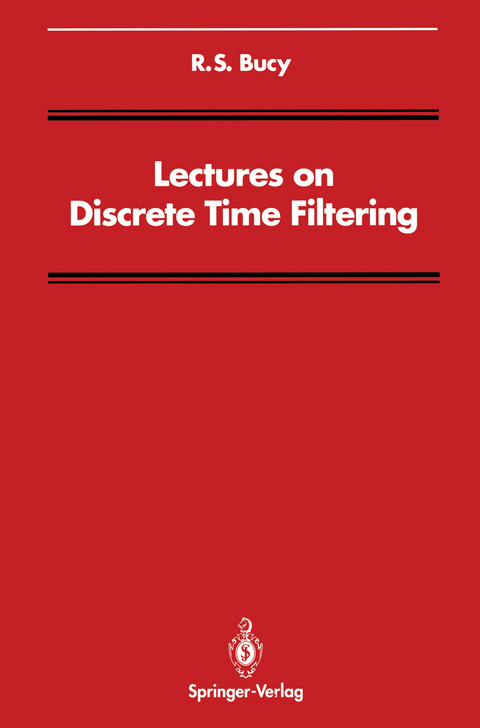
Lectures on Discrete Time Filtering
Springer-Verlag New York Inc.
978-1-4613-8394-9 (ISBN)
1 Review.- 1 Review of Concepts in Probability.- 2 Random Noise Generation.- 1 Random Noise Generation.- 2 Cholesky Decomposition.- 3 Uses of the Pseudo Inverse.- 4 Signal Models.- 5 Sensor Model.- 3 Historical Background.- 1 Background Material.- 2 Historical Developments for Filtering.- 3 Development of Innovations.- 4 Sequential Filter Development.- 4 Sequential Filtering Theory.- 1 Summary of the Sequential Filter.- 2 The Scalar Autonomous Riccati Equation.- 3 Linearizing the Riccati Equation.- 5 Burg Technique.- 1 Background Material.- 6 Signal Processing.- 1 The Burg Technique.- 2 Signal Processing.- 3 Burg Revisited (Rouché’s Theorem).- 7 Classical Approach.- 1 Classical Steady-State Filtering.- 8 A Priori Bounds.- 1 A Priori Bounds for the Riccati Equation.- 2 Information and Filtering.- 3 Nonlinear Systems.- 9 Asymptotic Theory.- 1 Applications of the Theory of Filtering.- 2 Asymptotic Theory of the Riccati Equation.- 3 Steady-State Solution to Riccati.- 10 Advanced Topics.- 1 Invariant Directions.- 2 Nonlinear Filtering.- 11 Applications.- 1 Historical Applications.- 12 Phase Tracking.- 1 The Phase Lock Loop.- 2 Phase Demodulation.- 13 Device Synthesis.- 1 Device Synthesis for Nonlinear Filtering.- 2 Radar Filtering Application.- 14 Random Fields.
| Reihe/Serie | Signal Processing and Digital Filtering |
|---|---|
| Mitarbeit |
Assistent: B.G. Williams Stellvertretende Herausgeber: C.S. Burrus |
| Zusatzinfo | XV, 156 p. |
| Verlagsort | New York, NY |
| Sprache | englisch |
| Maße | 155 x 235 mm |
| Themenwelt | Mathematik / Informatik ► Mathematik ► Algebra |
| Mathematik / Informatik ► Mathematik ► Angewandte Mathematik | |
| Naturwissenschaften ► Geowissenschaften ► Geologie | |
| Naturwissenschaften ► Geowissenschaften ► Geophysik | |
| Naturwissenschaften ► Physik / Astronomie ► Mechanik | |
| ISBN-10 | 1-4613-8394-3 / 1461383943 |
| ISBN-13 | 978-1-4613-8394-9 / 9781461383949 |
| Zustand | Neuware |
| Haben Sie eine Frage zum Produkt? |
aus dem Bereich


